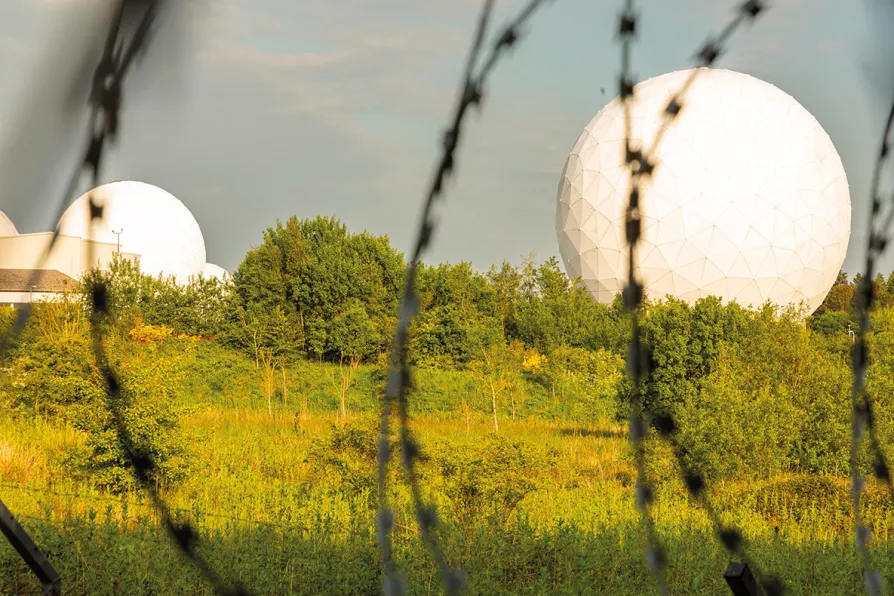A vast US war fleet deployed in the south Caribbean — ostensibly to fight drug-trafficking but widely seen as a push for violent regime change — has sparked international condemnation and bipartisan resistance in the US itself. FRANCISCO DOMINGUEZ reports

 Menwith Hill, where international commercial communications are intercepted by the NSA with dish antennas directed at the satellites concealed inside ‘golf balls’
Menwith Hill, where international commercial communications are intercepted by the NSA with dish antennas directed at the satellites concealed inside ‘golf balls’
IT IS now evident that then-Tory prime minister Margaret Thatcher and her cabinet viewed the miners’ strike as a war, identified the National Union of Mineworkers (NUM) as “the enemy within,” and used a military strategy to defeat the strike.
One of the tactics used in war is spying — the gathering of intelligence to gain an advantage by knowing the strength of the enemy, what it is doing and what it is going to do.
In 1985 Cathy Massiter, employed by Britain’s security service (MI5), “blew the whistle” and revealed that, under the cloak of a threat to national political and economic interests, “subversive elements” (notably communists and Morning Star readers) infiltrated organisations such as trade unions, thus were subjected to surveillance — and Mick McGahey was not the only communist in the NUM.
Robin Robison exposed that the government Communications Headquarters (GCHQ) monitors the phone calls of British activists opposed to the status quo. GCHQ is complicit with its (vastly bigger) partner, the US National Security Agency (NSA), under the umbrella of the UKUSA Alliance.
In 1984, when telecommunications technology pre-dated fibre-optic cables, mobile phone networks and the internet, phone calls were relayed by landlines (mainly carried on wires strung between telegraph poles or underground cables); by a microwave network of dish antennas mounted on line-of-sight masts, usually located on remote hilltops, and long-distance international calls were relayed by satellites (eg the Intelsats) downlinking to transceiver stations such as Goonhilly Downs in Cornwall. All telephone calls transmitted over the different relay systems could be intercepted while in transit.
International commercial communications are intercepted by the NSA with dish antennas directed at the satellites concealed inside “golf balls” at Menwith Hill. The NSA and GCHQ jointly operate another intercept station at Bude, adjacent to Goonhilly Downs.
The security service and its Special Branch police could tap telephone landlines discretely, but legally only one at a time and only when authorised by a warrant issued by the home secretary.
However, it was evident that mass interceptions were being conducted during the strike on a scale that only the NSA and GCHQ had the technology to perform. When home secretary Leon Brittan denounced as “a smear” the accusation that the NUM’s telephones were being tapped, that statement did not constitute an actual denial.
Every Friday after the miners had collected in Otley Marketplace, I would call the NUM branch secretary at Sharlston Colliery and once, as his phone was ringing, I could hear a recording of his previous conversation.

JOHN GREEN has doubts about the efficacy of the Freedom of Information Act, once trumpeted by Tony Blair

The Home Secretary’s recent letter suggests the Labour government may finally deliver on its nine-year manifesto commitment, writes KATE FLANNERY, but we must move quickly: as recently as 2024 Northumbria police destroyed miners’ strike documents











